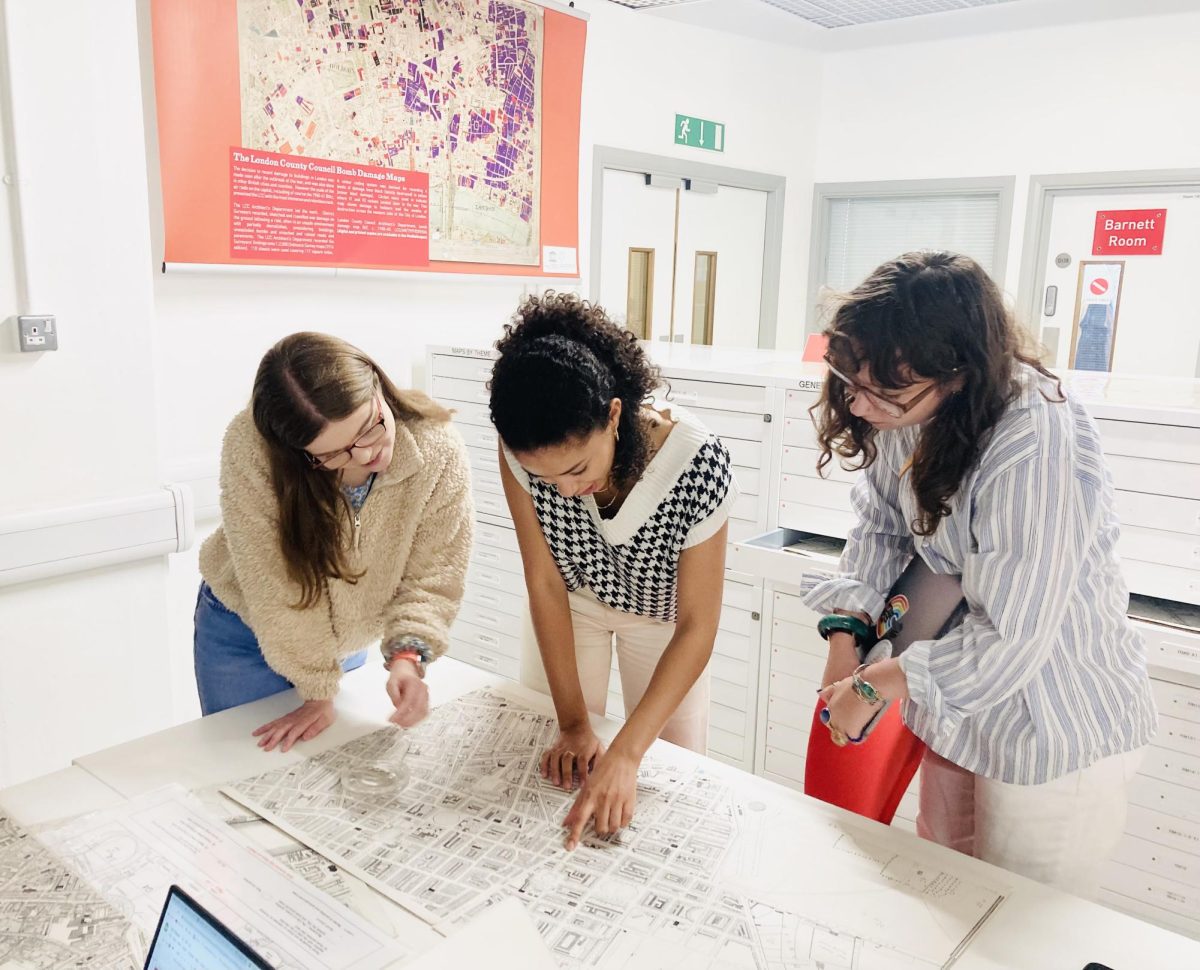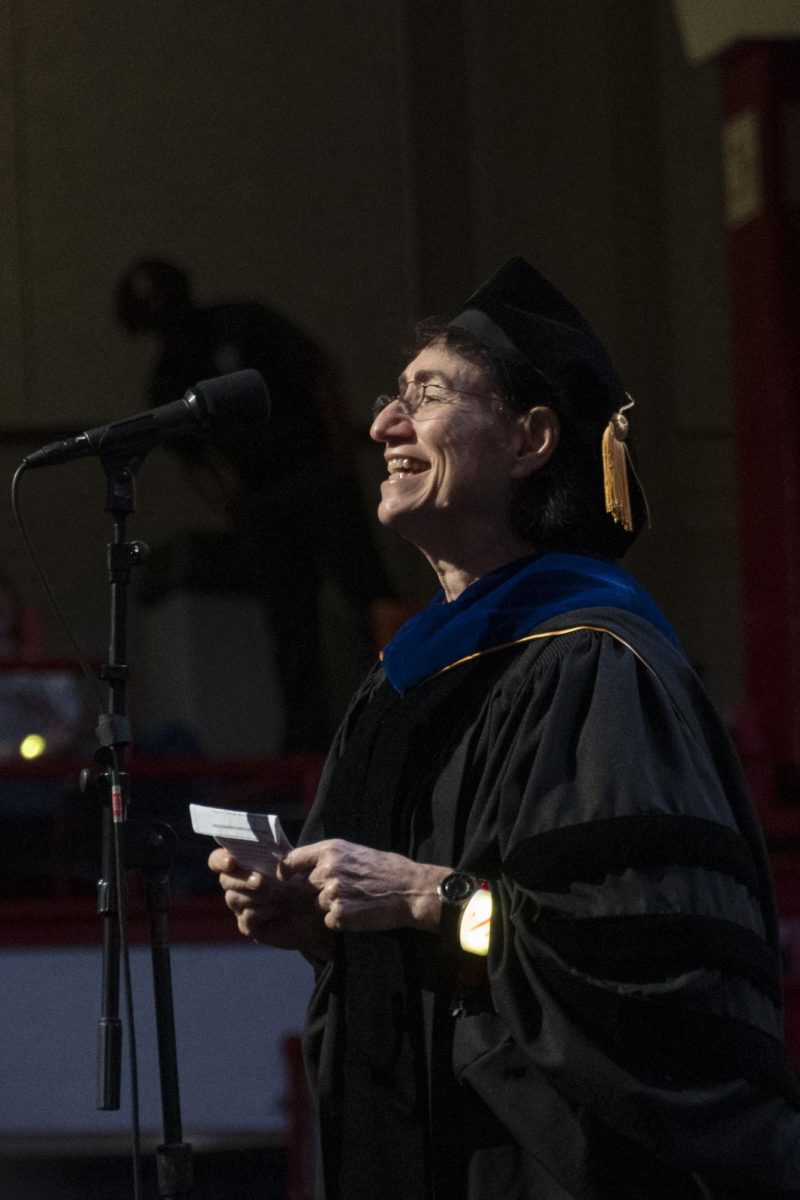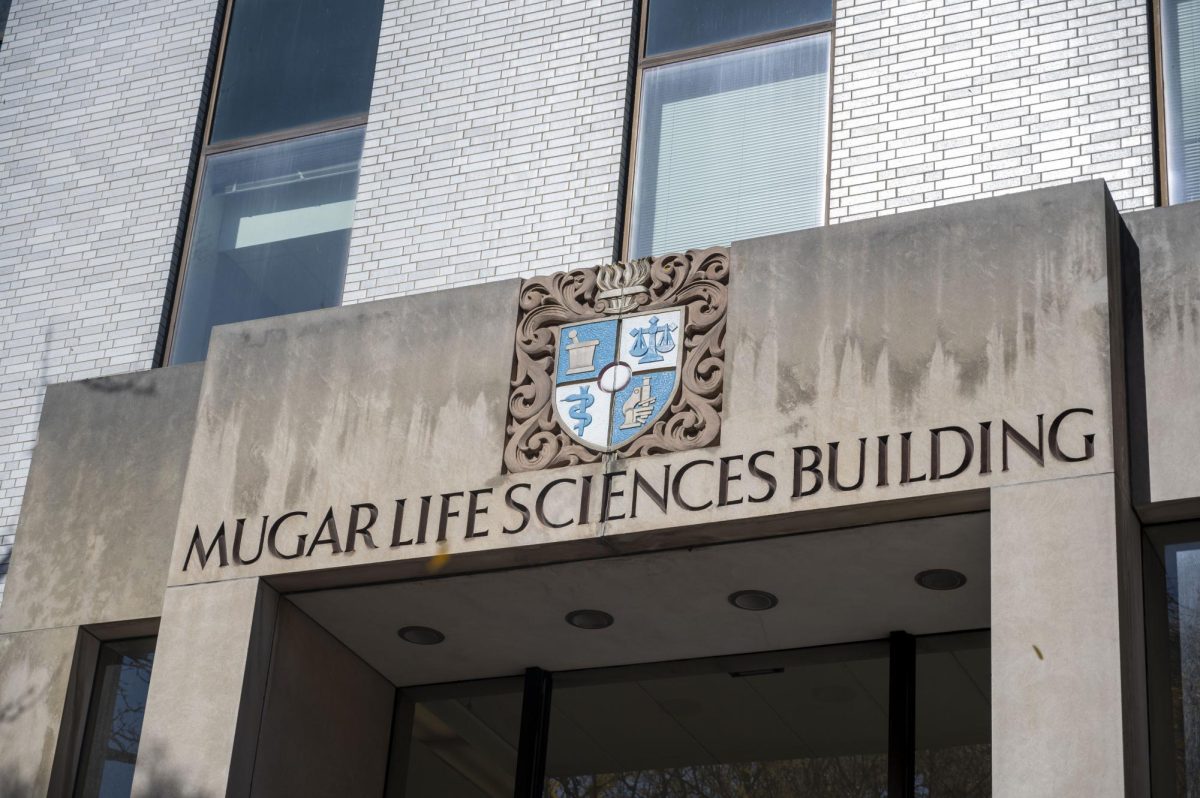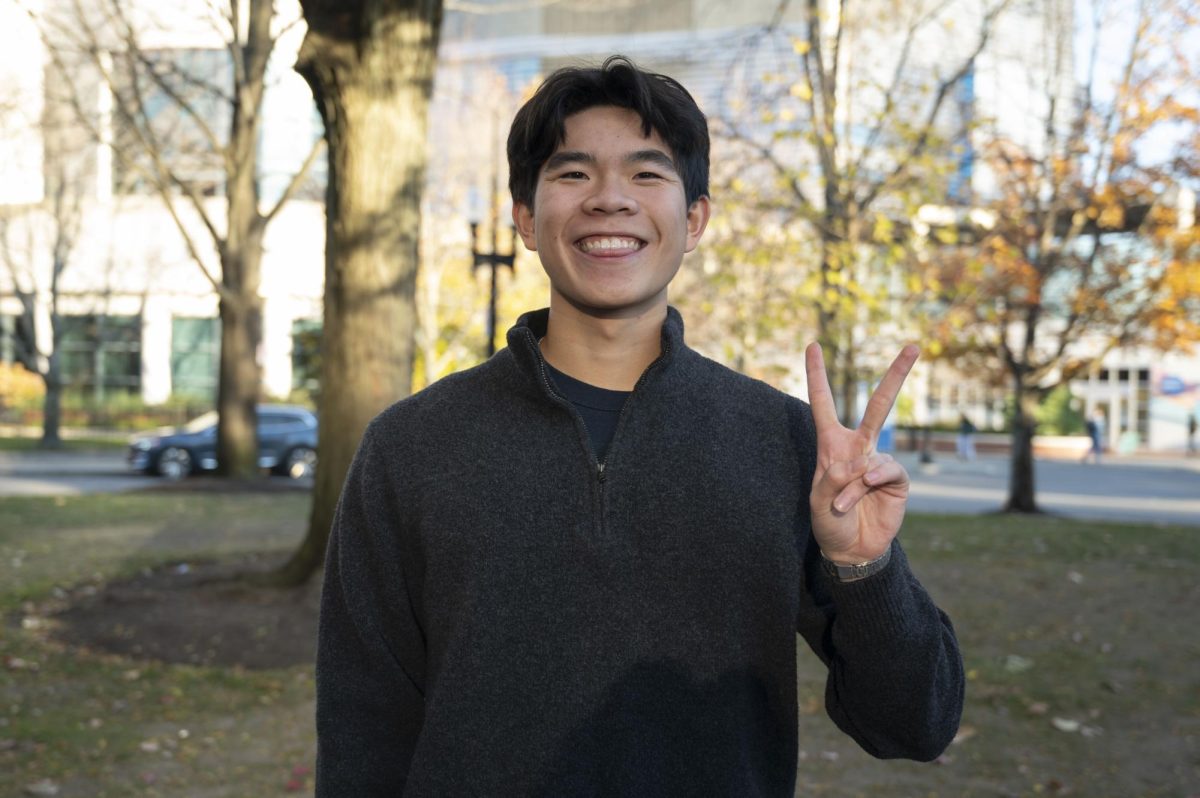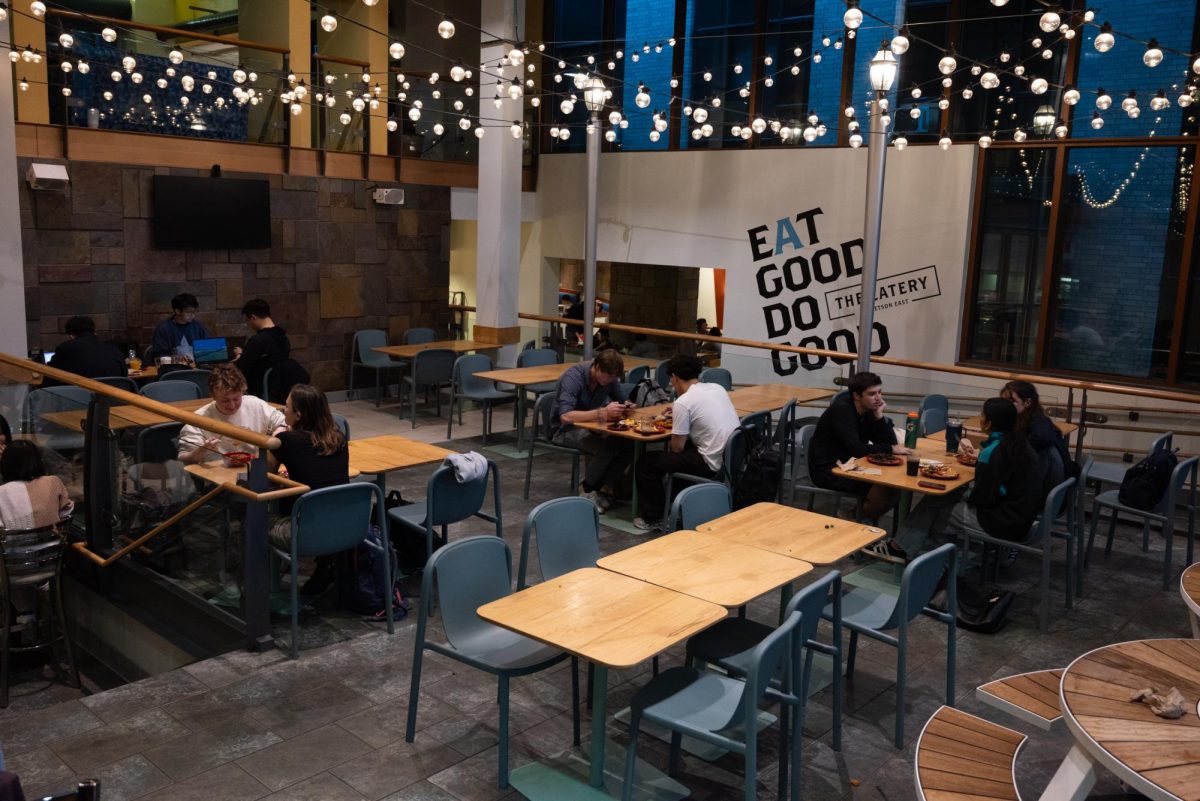The News continues its in-depth look into athletic funding with this, the second part of a four-part series:
No one said jumping from Division III to Division I would be easy. NU track coach Sherman Hart understood this when he took the job as women’s coach in 1988, and was reminded again when the program merged in 1999. Still, Hart never could have expected some of the aftereffects of taking on both programs, all as a byproduct of compensating for a limited budget.
Hart and his coaching staff of four paid coaches and up to six volunteers, work with the 80-plus members of the track team for about 12 hours each day. Hart often fears for the well being of his personnel, admitting, “you’re going to burn your staff out because we’re working so hard to try to get money.”
“We’re a year-round program,” he said. “We’re out here almost six, seven days a week trying to make money; they’ve done most of the Patriots games, and that means that someone from the staff has to be out there too at some point, so we’re doing a lot more to try to survive as a program in terms of trying to fund raise and trying to get money.”
In addition, the finances dictate traveling.
“We take four vans, and we drive straight to Florida. It’s a long ride for athletes; we’re on the road 28 hours so we can get our spring trip in. If we don’t drive, then we don’t go. That’s the whole thing about everything; we have to do it the hard way. I can’t say, ‘Okay people, get up on the bus, let’s go.’
“If you don’t have a large travel budget then the concession you make is that you have to beg, borrow and steal; borrow parents, borrow athletes, to get you to competitions; that’s one of the biggest things,” he said.
Brian McCants, a junior who participates in everything from 55-meter hurdles to middle-distance, admits to feeling added duress due to fundraising.
“We work at the Pats games a lot. We do ushering, and you do security. You do just basic jobs around the stadium. You have to be there at 7:30 in the morning. It’s pretty much your whole day. You’re the first one there, and the last one to leave. You work at soccer games, Revolution games, World Cup games last year, and you actually even work at the Northeastern football and hockey games.
“It’s stressful. It’s mind shedding. You’ll have a meet on Saturday, and you’ll have to wake up the next day at 5 a.m. to be on the bus at 6:30 so you can go to work a game so you can run in the meet next weekend because we don’t have enough money to pay for everyone to go to the meet,” he said.
Though the training facilities are ideal in certain aspects, they cause more problems in others. Cabot Gym is on university grounds, but offers difficult practice situations. Solomon track, located in Dedham, is one of the top facilities in the conference, but is far from the Northeastern campus.
“If you drive an athlete there and you drive him back home, you leave him out there until 4:30, and then you’re going to get home at 9 p.m. for maybe an hour practice or an hour and a half. Facility-wise, it’s fine,” Hart said.
“I like Cabot to some extent because it’s home,” he said, “but I think Cabot lends us to injuries because it’s smaller, and doesn’t give as much. It’s not like the world-class tracks that the other schools have around this area. Every major school here and even the Division III schools seem to have a 200-meter track, with the exception of us.”
McCants agreed.
“It’s a 150-meter track, which is really bad, and you’re running on tight turns all day long. The ground is not really that good. It just destroys your shins and it destroys your knees, and it makes a lot of kids on the team get stress fractures because of that.”
Success has never been an issue with the coach; he has won at every level. After years of dominance in the America East conference, the 15-time conference coach of the year winner yearns to bring his program to another level. A fully funded track program awards 12 scholarships to men and 18 to women. Northeastern awards eight and 12, respectively, but because it is a five-year program, the team usually nets only about five male and eight female scholarships.
“I’ve always had a desire to be a fully funded program. I always said, ‘If we prove it, are we going to get the money?’ People always say, ‘Absolutely, if you prove it,’ so they must be thinking that we are not capable of winning. I’ve heard one athletic director say, ‘How did you win this? Because you don’t have the money or anything else.’
“Are [the administrators] going to deliver what they’re going to promise?” he asked.
McCants doubts it will ever happen.
“I haven’t seen [better funding] since day one,” he said. “We still have to work to do everything. There has to be some way where we need to get money so everybody can fly to Florida like normal people do, and we still have to fund our own training trip.
“That doesn’t make any sense, that we need to do all that stuff, and other teams just can sit around, and just get all their stuff for free. I know there’s less people on other teams, but, c’mon! You look at teams like hockey; you look at teams like football. Football probably even has more people than we do, and they get everything. They don’t fund raise, they don’t do anything. I guess that the money that comes in comes from the stadium [Parsons Field] and the alumni. Track is not really big on alumni support.”
Hart agreed, but remains more optimistic for future assistance.
“I think they give us some, but not a lot. I think that when the programs combined, a lot of alumni were really upset with the choice they made in terms of being the head coach. They sort of just dropped off the face of the earth. Now they’re coming back because they see that the program is continuing to win, and the program is continuing to do the things that they did when they were here.”
“A lot of fence mending has been done, and a lot of them are coming back to the program, a lot of them call and ask questions. I think the alumni piece is starting to come around, so hopefully in the next year or so they’ll start digging into their pockets,” he said.
So, what keeps the program going?
“The challenge,” Hart said, “because last outdoor season we made history by being the first staff to win both of the conference championships. I mean Northeastern had won men and women, but they had two separate staffs. We were the first single staff to win both men and women at one meet and I just told them that we’re going to win all three [in cross country]. In the next year or so, we’re going to win cross country. They all looked at me like, ‘Sherman has gone to a next level of retardation. He’s totally sick.’ But they know I’m serious.
“I’m not going to say I enjoy the challenge everyday, I won’t say that I don’t long for the money where we can just sit and relax and do all the fun stuff that some of the other coaches do but it’s definitely a challenge. In a way, it’s fun. After it’s all said and done, you know you beat a program that has a lot more scholarships than you, and a lot more money in their program than you.”
McCants has a simple solution to the problem.
“The funding that goes into the sports should be more evenly distributed. If it becomes that way, people are going to see where their money is actually going,” he said. “The volleyball team is starting to get a lot more money now; I see them walking around with Nike bags … We have to pay for our own stuff. You don’t need that much stuff, but you need proper facilities, proper clothing … you need warm-ups that are going to fit you, you need spikes that are going to fit you. You can’t get a pair of spikes every two years. Spikes should be given to you when you’re in indoors and in outdoors. I don’t know why other teams get two pair of running shoes and then a pair of weightlifting shoes, when they don’t even run. That doesn’t make any sense.
“You wouldn’t have to go through so much of the hassle, or the BS, and all that stuff,” McCants added.
Next week, the News sits down with the soccer program to discuss their side of the funding issue.



